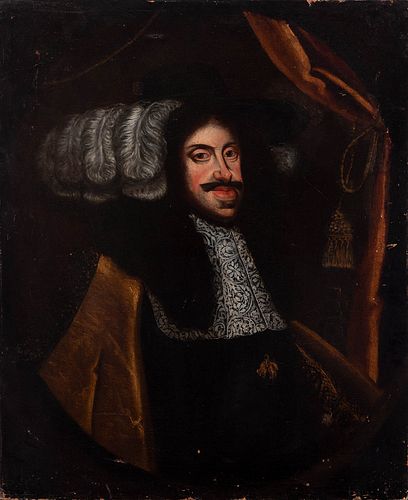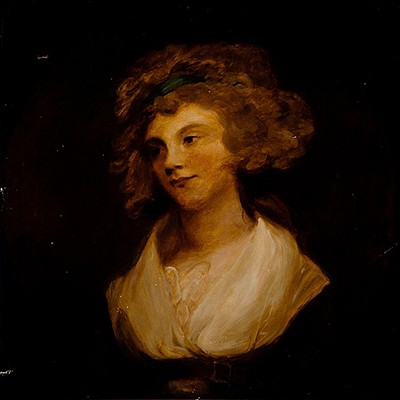Austrian school; late seventeenth century. "Portrait of Emperor Leopold of Habsburg". Oil on canvas.
About Seller
Carrer Aragó 346
Barcelona
Spain
Setdart Subastas was born in 2004 and is currently the first online art auction in Spain with solidity, prestige and reliability guaranteed by our more than 60,000 users. Setdart has a young, dynamic and enterprising team ready to successfully manage the purchase and sale of art works through custom...Read more
Two ways to bid:
- Leave a max absentee bid and the platform will bid on your behalf up to your maximum bid during the live auction.
- Bid live during the auction and your bids will be submitted real-time to the auctioneer.
Bid Increments
| Price | Bid Increment |
|---|---|
| EUR€0 | EUR€10 |
| EUR€200 | EUR€25 |
| EUR€500 | EUR€50 |
| EUR€1,000 | EUR€100 |
| EUR€3,000 | EUR€200 |
| EUR€5,000 | EUR€500 |
| EUR€10,000 | EUR€1,000 |
| EUR€20,000 | EUR€2,000 |
| EUR€50,000 | EUR€5,000 |
About Auction
Nov 25, 2021
Setdart Auction House sofia@setdart.com
- Lot Description
Austrian school; late seventeenth century. "Portrait of Emperor Leopold of Habsburg". Oil on canvas. Polychrome lost. Measurements: 93 x 75 cm. Leopold of Habsburg (1640 - 1705) was emperor of the Holy Roman Empire, king of Hungary, Croatia and Bohemia. Second son of Ferdinand III, Holy Roman Emperor, by his first wife, Maria Anna of Spain, Leopold became heir in 1654 due to the death of his older brother Ferdinand IV. Elected in 1658, Leopold ruled the Holy Roman Empire until his death in 1705, making him the longest-serving Habsburg emperor on the throne. Leopold's reign is known for conflicts with the Ottoman Empire in the Great Turkish War (1683-1699) and rivalry with Louis XIV. After more than a decade of war, Leopold emerged victorious in the east thanks to the military talent of Prince Eugene of Savoy. By the Treaty of Karlowitz, Leopold regained almost the entire Kingdom of Hungary, which had fallen under Turkish power in the years following the Battle of Mohács in 1526. Leopold fought three wars against France: the Franco-Dutch War, the Nine Years' War, and the War of the Spanish Succession. In the latter, Leopold intended to cede to his youngest son Charles the entire Spanish inheritance, regardless of the will of the late Charles II. Leopold initiated a war that soon engulfed much of Europe. The early years of the war went fairly well for Austria, with victories at Schellenberg and Blenheim, but the war would drag on until 1714, nine years after Leopold's death, which had little effect on the warring nations. When peace returned with the Treaty of Rastatt, Austria could not be said to have emerged as triumphant as it had from the war against the Turks. During the 17th century, as in the rest of Europe, the portrait became the genre that acquired the most prominence due to the excellence of Italian painting, as a consequence of the new social structures that were established in the Western world during this century, embodying the maximum expression of the transformation of taste and mentality of the new clientele, which emerged among the nobility and the wealthy upper bourgeoisie, who would take the reins of history in this period. While official circles gave preponderance to other artistic genres, such as history painting, and the incipient collecting encouraged the profusion of costume paintings, portraiture monopolized the demand for painting destined for the more private sphere, as a reflection of the value of the individual in the new society. This genre embodies the permanent presence of the image of its protagonists, to be enjoyed in the intimacy of a studio, in the daily warmth of a family cabinet or presiding over the main rooms of the house.
Dimensions:
INV Number:
93 x 75 cm.
35256490 - Shipping Info
-
In-house shipping available. Please inquire at admin@setdart.com.
-
- Buyer's Premium



 EUR
EUR CAD
CAD AUD
AUD GBP
GBP MXN
MXN HKD
HKD CNY
CNY MYR
MYR SEK
SEK SGD
SGD CHF
CHF THB
THB















